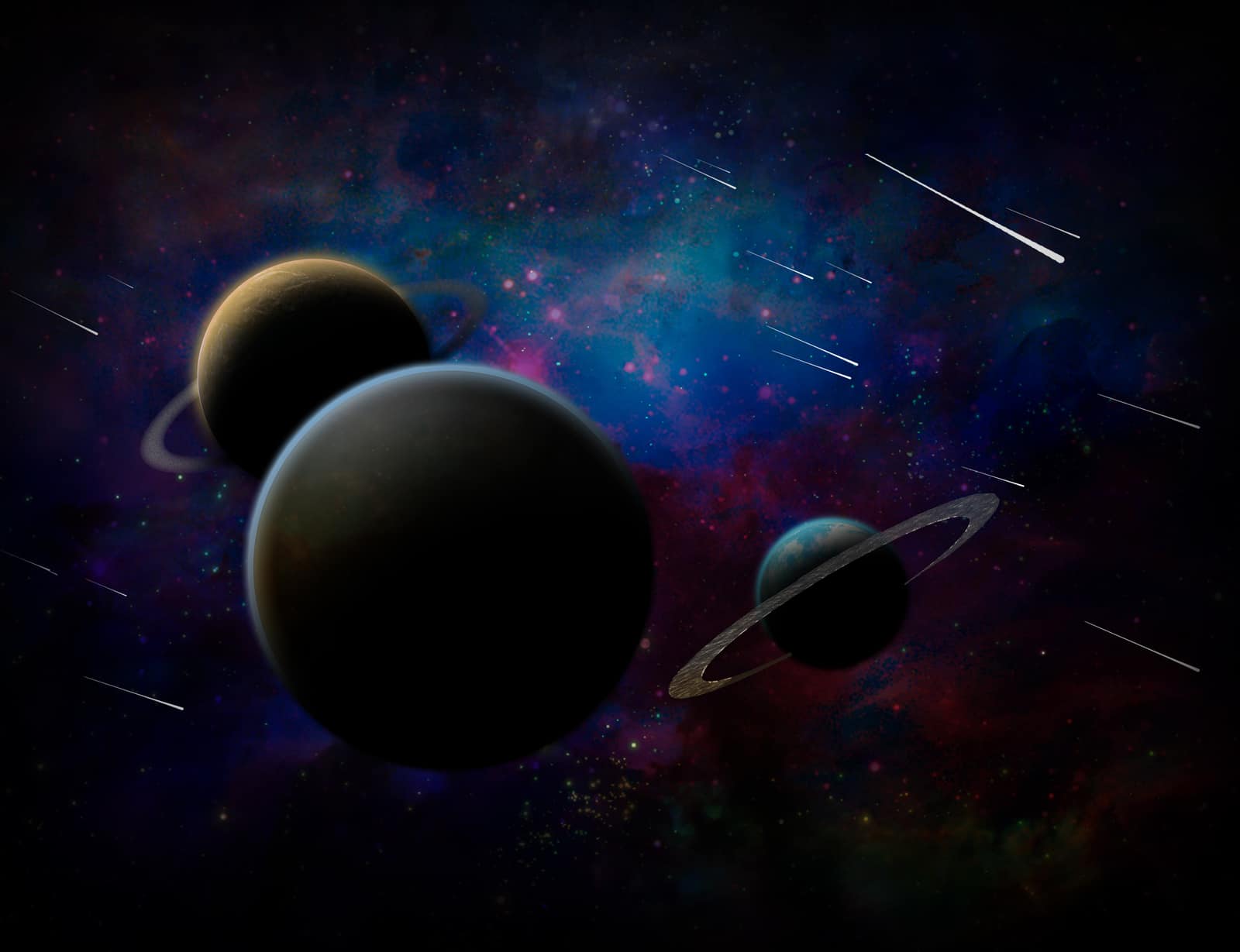
Amazing Meteors and Meteor Showers Facts for Kids
The solar system contains material left over from its formation 4.6 billion years ago. Those materials include objects called comets, meteoroids, and asteroids. Some are seen in the night sky from Earth, and some even fall on Earth’s surface from time to time.
In this lesson, we introduce you to meteors, meteoroids, and meteorites. What are they? And what is the difference between them? Let’s find out!
What Are Meteors?
A meteoroid is a small chunk of metal or rock that travels through space and orbits the sun. When a meteoroid falls through the atmosphere surrounding Earth, it burns up and creates a streak of light called a meteor. Sometimes a meteoroid survives its fall and reaches Earth’s surface. It is then called a meteorite.
How Are Meteoroids Formed?
Some meteoroids are made from the collision of objects in space called asteroids. Asteroids are found in a region between the paths of Mars and Jupiter called the asteroid belt. The power of asteroid collision can throw the meteoroids, and even the asteroids themselves, out of their orbit. As a result, a meteoroid can collide with a planet or a moon.
Other meteoroids are the debris shed from comets as they travel through space. When a comet approaches the sun, it grows a bright tail made of dust and gas. This dusty tail often contains hundreds or even thousands of meteoroids. Usually, meteoroids that are formed from comets orbit the sun together in what is called a meteoroid stream.
Where Are Meteoroids Found?
Meteoroids are found all over the solar system, among the rocky inner planets and the gas giants. They are also found on the edge of the solar system in regions called the Kuiper belt and the Oort cloud.
How Big is a Meteor?
Meteoroids are typically small, ranging between the size of a dust particle and a boulder. Because of their size, they usually burn up quickly in the Earth’s atmosphere before they can hit the surface.
How Fast Is a Meteor?
Meteoroids move at very high speeds, and they enter the Earth’s atmosphere travelling as fast as 72 kilometres per second.

Meteor Shower
Meteors are common and can be seen anytime in the night sky, but the best time to observe them is during a meteor shower. At such time, thousands of meteors can be seen per hour. These meteor showers often occur when Earth passes through the orbit of a comet.
Scientists name meteor showers after the constellation from which the meteors appear to be coming. For example, the Orionids Meteor Shower appears to be coming from the constellation Orion.
Meteor showers appear around the same dates each year. The peak viewing times can vary by a day or two each year, and some years have more meteors per hour than others. It becomes hard to see many meteors if the moon is full or near full. The dates of major meteor showers are as follows:
Shower Name | Date | Peak Viewing Time | Constellation |
| Quadrantids | 28 Dec – 12 Jan | 2 – 3 January | Boötes |
| Lyrids | 14 – 30 Apr | 21 – 23 April | Lyra |
| Orionids | 2 Oct – 7 Nov | 21 – 22 October | Orion |
| Perseids | 17 Jul – 24 Aug | 11 – 13 August | Perseus |
| Leonids | 6 – 30 Nov | 17 November | Leo |
| Geminids | 4 – 17 Nov | 14 – 15 December | Gemini |
| Eta Aquariids | 19 Apr – 28 May | 6 May | Aquarius |
| Delta Aquariids | 12 Jul – 23 Aug | 30 July | Aquarius |
| Alpha Capricornids | 3 Jul – 15 Aug | 30 July | Capricornus |
| Draconids | 6 – 10 Oct | 8 October | Draco |
| Ursids | 17 – 26 Dec | 22 – 23 December | Ursa |
| Northern Taurids | 20 Oct – 10 Dec | 12 – 13 November | Taurus |
| Southern Taurids | 10 Sep – 20 Nov | 10 – 11 October | Taurus |
13 Interesting Facts about Meteors
- Meteors can also be called shooting stars or falling stars.
- The word meteor is taken from the Greek word “meteoros,” which means raised or suspended in the air.
- Meteors are usually the size of pebbles.
- The atmosphere of Earth receives millions of meteors every day.
- Meteors can be visible as high as 120 kilometres above Earth.
- Some meteors are faint and hard to see, but they can be detected by radar.
- Most meteors fall in the ocean because most of the Earth’s surface is covered by water.
- Meteors can give off different colours when they burn according to their composition.
- Meteor showers occur not only on Earth but on other planets too.
- Meteorites hit the moon’s surface and explode without burning up because there is no air on the moon.
- Some meteors burn brighter than usual, and these are called fireballs.
- Most fireballs cannot be seen because they occur over the ocean or during daylight.
- The meteorite crashes on Earth’s surface create pits called craters. This can occur on other planets and moons too.
Why not subscribe to our LearningMole Library for as little as £1.99 per month to access over 1200 fun educational videos.


Leave a Reply